
Francisco José de Goya y Lucientes was a Spanish romantic painter and printmaker. He is considered the most important Spanish artist of the late 18th and early 19th centuries. His paintings, drawings, and engravings reflected contemporary historical upheavals and influenced important 19th- and 20th-century painters. Goya is often referred to as the last of the Old Masters and the first of the moderns.

The Prado Museum, officially known as Museo Nacional del Prado, is the main Spanish national art museum, located in central Madrid. It is widely considered to house one of the world's finest collections of European art, dating from the 12th century to the early 20th century, based on the former Spanish royal collection, and the single best collection of Spanish art. Founded as a museum of paintings and sculpture in 1819, it also contains important collections of other types of works. The Prado Museum is one of the most visited sites in the world and is considered one of the greatest art museums in the world. The numerous works by Francisco Goya, the single most extensively represented artist, as well as by Hieronymus Bosch, El Greco, Peter Paul Rubens, Titian, and Diego Velázquez, are some of the highlights of the collection. Velázquez and his keen eye and sensibility were also responsible for bringing much of the museum's fine collection of Italian masters to Spain, now one of the largest outside Italy.

Fuendetodos is a town in the Campo de Belchite comarca (county), in Aragon, Spain, located about 44 kilometers south-east of Zaragoza. As of 2011, it had a population of approximately 178.
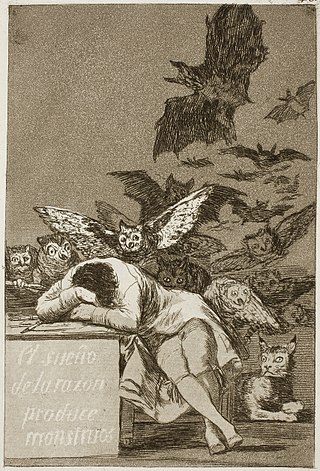
Los caprichos is a set of 80 prints in aquatint and etching created by the Spanish artist Francisco Goya in 1797–1798, and published as an album in 1799. The prints were an artistic experiment: a medium for Goya's condemnation of the universal follies and foolishness in the Spanish society in which he lived. The criticisms are far-ranging and acidic; the images expose the predominance of superstition, the ignorance and inabilities of the various members of the ruling class, pedagogical short-comings, marital mistakes and the decline of rationality. Some of the prints have anticlerical themes. Goya described the series as depicting "the innumerable foibles and follies to be found in any civilized society, and from the common prejudices and deceitful practices which custom, ignorance or self-interest have made usual".

The Third of May 1808 is a painting completed in 1814 by the Spanish painter Francisco Goya, now in the Museo del Prado, Madrid. In the work, Goya sought to commemorate Spanish resistance to Napoleon's armies during the occupation of 1808 in the Peninsular War. Along with its companion piece of the same size, The Second of May 1808, it was commissioned by the provisional government of Spain at Goya's suggestion.
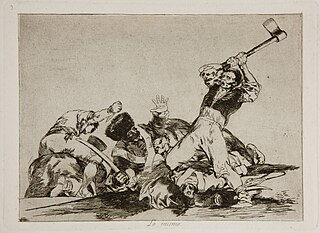
The Disasters of War is a series of 82 prints created between 1810 and 1820 by the Spanish painter and printmaker Francisco Goya (1746–1828). Although Goya did not make known his intention when creating the plates, art historians view them as a visual protest against the violence of the 1808 Dos de Mayo Uprising, the subsequent Peninsular War of 1808–1814 and the setbacks to the liberal cause following the restoration of the Bourbon monarchy in 1814. During the conflicts between Napoleon's French Empire and Spain, Goya retained his position as first court painter to the Spanish crown and continued to produce portraits of the Spanish and French rulers. Although deeply affected by the war, he kept private his thoughts on the art he produced in response to the conflict and its aftermath.

The Sleep of Reason Produces Monsters or The Dream of Reason Produces Monsters is an aquatint by the Spanish painter and printmaker Francisco Goya. Created between 1797 and 1799 for the Diario de Madrid, it is the 43rd of the 80 aquatints making up the satirical Los caprichos.
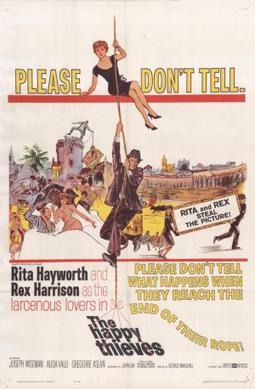
The Happy Thieves is a 1961 American crime/comedy-drama film starring Rex Harrison and Rita Hayworth, and directed by George Marshall. The film is based on the novel The Oldest Confession by Richard Condon. The film was poorly received, with star Harrison later describing it as "absolute rubbish".
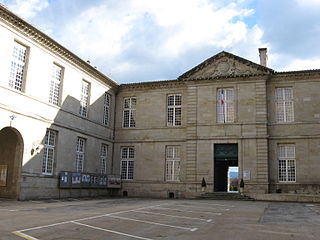
The Goya Museum is an art museum located in Castres, France. The museum was originally established in 1840 and is named after the Spanish painter Francisco Goya.

Yard with Lunatics is a small oil-on-tinplate painting completed by the Spanish artist Francisco Goya between 1793 and 1794. Goya said that the painting was informed by scenes of institutions he had witnessed as a youth in Zaragoza. Yard with Lunatics was painted around the time when Goya’s deafness and fear of mental illness were developing and he was increasingly complaining of his health. A contemporary diagnosis read, "the noises in his head and deafness aren’t improving, yet his vision is much better and he is back in control of his balance."

The Black Paintings is the name given to a group of 14 paintings by Francisco Goya from the later years of his life, likely between 1819 and 1823. They portray intense, haunting themes, reflective of both his fear of insanity and his bleak outlook on humanity. In 1819, at the age of 72, Goya moved into a two-story house outside Madrid that was called Quinta del Sordo. Although the house had been named after the previous owner, who was deaf, Goya too was nearly deaf at the time as a result of an unknown illness he had suffered when he was 46. The paintings originally were painted as murals on the walls of the house, later being "hacked off" the walls and attached to canvas by owner Baron Frédéric Émile d'Erlanger. They are now in the Museo del Prado in Madrid.
Australephestiodes is a genus of moths belonging to the family Pyralidae. It contains only one species Australephestiodes stictella, which is found in Florida and on the Bahamas, Jamaica, Puerto Rico and the Virgin Islands.
Goya is a genus of snout moths. It was described by Émile Louis Ragonot in 1888.

Quinta del Sordo, or Quinta de Goya, was an extensive estate and country house situated on a hill in the old municipality of Carabanchel on the outskirts of Madrid. The house is best known as the home of Francisco de Goya, where he painted 14 murals known as the Black Paintings. Contrary to popular belief, the estate was given its name due to the deafness of a prior owner, not Goya himself, who was deafened by illness in 1792. The house was demolished in 1909.
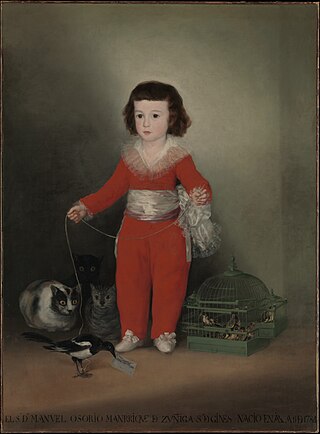
Manuel Osorio Manrique de Zúñiga is a large full-length portrait in oil painted in 1787–88 by the Spanish artist Francisco Goya. It depicts a boy three or four years of age, standing in red clothes, with birds and cats. It is also known as Goya's "Red Boy". It was described by art historian Claus Virch in 1967 as "one of the most appealing and successful portraits of children ever painted, and also one of the most famous". The painting has been held by the Metropolitan Museum of Art in New York since 1949.

Bullfight is an 1824 oil painting by Goya owned since 1992 by the J. Paul Getty Museum. When the museum bought the painting at auction in 1992, it shattered the artist's previous auction record. This piece shows Goya’s favorite form of entertainment: the controversial contest of bullfighting.
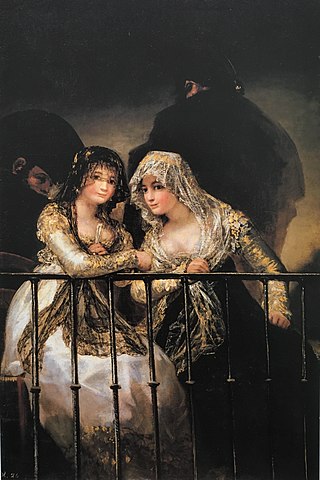
Majas on a Balcony is an oil painting by Francisco Goya, completed between 1808 and 1814, while Spain was engaged in the state of conflict after the invasion of Napoleon's French forces. The painting in the collection of Edmond de Rothschild in Switzerland is thought to be the original. Another version at the Metropolitan Museum of Art in New York City is thought to be a copy. A further copy, attributed to Leonardo Alenza, is in the Pezzoli collection in Paris.
Jeannine Baticle was a French art historian, and curator, She was the Honorary Deputy Director and Chief Curator of the Department of Paintings of the Louvre Museum, and a specialist in Spanish painting.

Children in a Chariot is a 1779 painting by Francisco de Goya. It is part of the third series of cartoons he produced for tapestries at the Royal Palace of El Pardo; the tapestry in question was to be positioned over a door. The painting is in the Toledo Museum of Art.

















